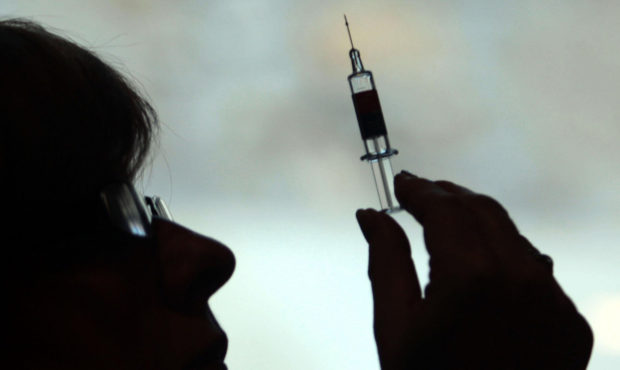
The rollout of the fourth Covid jag for the elderly and vulnerable will start in Scotland tomorrow as the country battles a new variant of the Omicron virus which has infected one in every 14 people.
Booster jag appointments begin tomorrow for 480,000 Scots aged 75 and over, care home residents and those in high-risk groups. The more transmissible BA.2 strain of Omicron is now dominant in Scotland, responsible for around 85% of the 376,000 recorded cases. It is thought to spread nearly twice as quickly as the original BA.1 strain of Omicron.
The infection rate among over-70s, the age group most susceptible to severe illness, has reached the highest estimated level since the survey began in 2020, according to the Office for National Statistics.
There are 2,050 Covid-positive people in Scots hospitals, just three short of the all-time high of 2,053 in January and a consultant at the flagship Queen Elizabeth University Hospital, in Glasgow, described the situation as “dire”.
While Covid patients were not getting so ill, due to vaccinations, the sheer number in hospital remained a huge burden, according to the consultant: “Once they have it, even if they are well, the resource implications are huge – they are isolated, other patients who may have been in contact are also isolated, nursing intensity and PPE usage increases, and moving them around hospital – to theatre, to radiology – becomes a major headache.
“As a result, many specialty wards are now Covid wards, and the knock-on effect is that getting patients into hospital becomes a huge challenge. Currently, two years into the pandemic, we cannot operate on any patients whose surgery does not need to be done within four weeks. The waiting lists are astronomical. It is increasingly obvious that many patients will never receive the treatment they require.”
NHS staff being forced to stay home after catching Covid is adding to the strain on health services with 2,600 nursing and midwifery staff – 3% of NHS Scotland nurses – off sick in the seven days to last Tuesday, the Royal College of Nursing revealed.
It said: “That’s back to the levels from mid-January. Nursing staff across acute, community and social care services are telling us that they are seeing the impact on their ability to provide safe care for patients and residents, and on their, and their colleagues’, wellbeing.”
Dr David Shackles, joint chair of Royal College of General Practitioners in Scotland who has surgeries in Perth and Scone, said practices across the country have been badly hit by staff illnesses. “One practice in Glasgow had no nurses at all, and GPs on holiday leave had to come back to take blood samples and patient care normally done by nurses,” he said.
Other Scottish Covid-hit GP practices have sent out texts to all patients urging them not to call except in emergencies.
NHS Tayside says it has cancelled procedures for patients because of the number of staff off with Covid. It said: “NHS Tayside has had to step down a small number of elective procedures due to staff absence.”
Meanwhile, NHS Greater Glasgow and Clyde (NHSGGC) temporarily reinstated visiting restrictions at Glasgow Royal Infirmary and Royal Alexandra Hospital.
Donald Mackaskill, chief executive of Scottish Care, which represents care homes and social care providers across the country, said: “We are hearing from our members that they are getting close to the worst peak of early January with staff absence in the high teens and 20s in terms of percentages.”

Enjoy the convenience of having The Sunday Post delivered as a digital ePaper straight to your smartphone, tablet or computer.
Subscribe for only £5.49 a month and enjoy all the benefits of the printed paper as a digital replica.
Subscribe